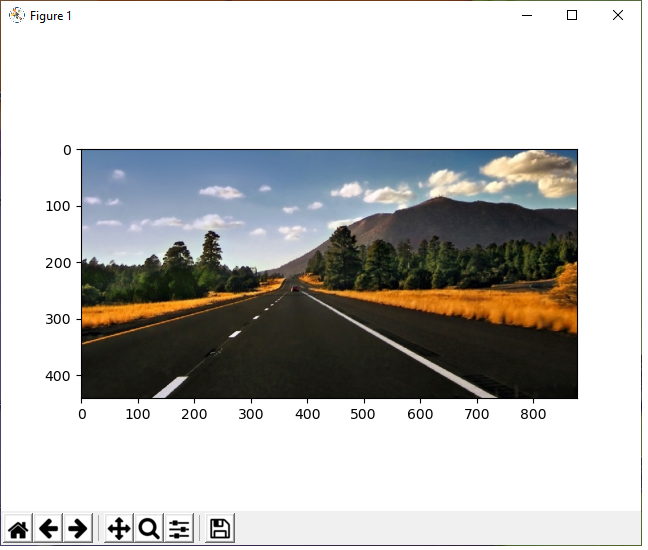

- Python opencv region of interest how to#
- Python opencv region of interest Patch#
- Python opencv region of interest full#
- Python opencv region of interest software#
- Python opencv region of interest code#
To avoid flickering of the rectangle, we will show it at it latest known position if the face is not detected. We will display a rectangle on top of the face. Inside the while loop we have every video frame inside the variable frame. Upon execution you will see the video played without sound. Start with this basic program: #! /usr/bin/python Each frame is shown for a brief period of time. To analyse the input video we extract each frame. Master Computer Vision with OpenCV and Python Video with Python OpenCV You need to have the cascade files (included in OpenCV) in the same directory as your program. This technique is known to work well with face detection. The most common face detection method is to extract cascades.
Python opencv region of interest software#
There are tons of Google Hangouts videos around the web and in these videos the face is usually large enough for the software to detect the faces.ĭetection of faces is achieved using the OpenCV (Open Computer Vision) library. As input video we will use a Google Hangouts video.
Python opencv region of interest how to#
In this tutorial you will learn how to apply face detection with Python. You may like: Robotics or Car tracking with cascades. For non scale and rotation changing input, this method works great. Thus, this method of object detection depends on the kind of application you want to build. It is a very basic and straightforward method where we find the most correlating area. Template matching is not scale invariant nor is it rotation invariant. Which are simply different statistical comparison methodsįinally, we get the rectangle variables and display the image. This method has six matching methods: CV_TM_SQDIFF, CV_TM_SQDIFF_NORMED, CV_TM_CCORR, CV_TM_CCORR_NORMED, CV_TM_CCOEFF and CV_TM_CCOEFF_NORMED. Pick the right statistical method for your application. The third argument is the statistical method. We use the cv2.matchTemplate(image,template,method) method to find the most similar area in the image.

We resize themand convert them to grayscale for faster detection: Min_val, max_val, min_loc, max_loc = cv2.minMaxLoc(result)īottom_right = (top_left + w, top_left + h)Ĭv2.rectangle(image,top_left, bottom_right,( 0, 0, 255), 4)įirst we load both the source image and template image with imread(). Result = cv2.matchTemplate(imageGray,templateGray, cv2.TM_CCOEFF) TemplateGray = cv2.cvtColor(template, cv2.COLOR_BGR2GRAY)

ImageGray = cv2.cvtColor(image, cv2.COLOR_BGR2GRAY) Lets have a look at the code: import numpy as np The template image T is slided over the source image S (moved over the source image), and the program tries to find matches using statistics.
Python opencv region of interest Patch#
Its application may be robotics or manufacturing.Ī patch is a small image with certain features. Template matching is a technique for finding areas of an image that are similar to a patch (template). You can save a modified image to the disk using: cv2.imwrite( 'filename.png',m)ĭownload Computer Vision Examples + Course To change the entire image, you’ll have to change all channels: m, m, m.

In the example below we remove one color channel: import cv2 You can modify the pixels and pixel channels (r,g,b) directly. To iterate over all pixels in the image you can use: import cv2 We can access the pixel data of an image directly using the matrix, example: import cv2
Python opencv region of interest code#
We can extract the width, height and color depth using the code below: import cv2 We demonstrate some examples of that below: Related courses: OpenCV (cv2) can be used to extract data from images and do operations on them. Hist_item = cv2.calcHist(, None,)Ĭv2.normalize(hist_item,hist_item, 0, 255,cv2.NORM_MINMAX) Histogram for a color image: # draw histogram in python.Ĭolor =
Python opencv region of interest full#


 0 kommentar(er)
0 kommentar(er)
